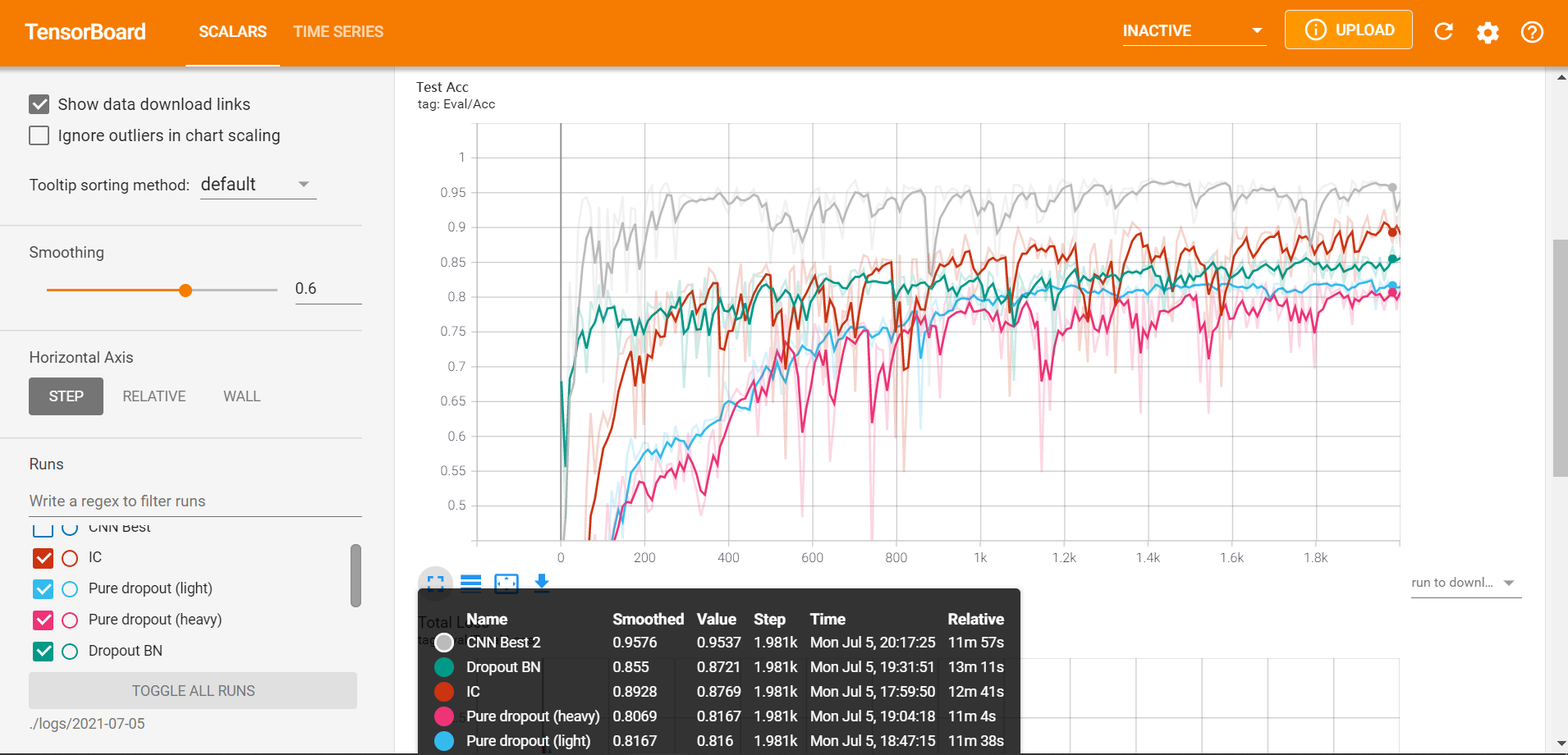Flaw Detection
SIGS torch classifiers for transfer learning
This project is built by:
- Qianyue He from Xi'an Jiaotong University.
- Ruikang Liu from Dalian University of Technology.
- Yangen Zhan from Tianjin University.
- Jindou Xie from National University of Defense Technology.
1. Usage
run python .\main.py --help to run with parameters.
PS D:\Classifier\py> python .\main.py --help
usage: main.py [-h] [--lr LR] [--ratio RATIO] [--epochs EPOCHS]
[--class_num CLASS_NUM] [--batch_sz BATCH_SZ]
[--inspect INSPECT] [-d] [-t] [-l] [-c]
optional arguments:
-h, --help show this help message and exit
--lr LR Learning rate
--ratio RATIO Ratio for validation set
--epochs EPOCHS Training lasts for . epochs
--class_num CLASS_NUM
How many classes we have
--batch_sz BATCH_SZ Batch size for miniBatch
--inspect INSPECT Print loss information every <inspect> batches
-d, --del_dir Delete dir ./logs and start new tensorboard records
-t, --transfer Using transfer learning
-l, --load Use saved model to train
-c, --net Use CNN? If false, use ResNet1.1 Single model classification
run:
python .\main.py -c --epochs=25 --class_num=9-cindicates using CNN model, otherwise, ResNet is to be used.-lparameters will load the trained model from foldermodels- when class number is 6, a different output layer is used.
1.2 Transfer Learning
run
python .\main.py -c -t --epochs=25 --class_num=6-tindicates transfer learning
2. Directory structure
models: where trained.pthfiles are storedauc: to which AUC plots are outputtedtrain6-cr-cr...: 6-class classification training / validation / test settrain9-cr-cr...: 9-class classification training setval9-cr-cr...: 9-class classification test setpy: where scripts are stored.auc_calc.py: AUC plotterCNN.py: CNN modelconfusion.py: Confusion matrix plottermain.py: Executable file for trainingResNet.py: ResNet modelutils.py: Utility functions like image loaderGoogLeNet.pyLeNet implementationResCNN.pyResNet + CNN structuresvm_gbdt.pySVM + Gradient Boosting Tree implementation.
matlab: matlab .m files for data transformation implementation.dataset1_process.m/dataset2_process.m: Data pre-process.
3. Requirements
CUDA is compulsory. Our implementation is based on Pytorch, with:
- CNN / ResNet implementations. For not getting bothered by requirement issues, you can run:
python3 -m pip install -r requirements.py4. Results
Tensorboard visualization for flaw classification:
- Result for 9-class classification: Acc is around 96.02% (augmented) (on test set), 95.52 (not augmented), 98.13% on train set.
- For 6-class problem: Acc is around 95.3%. Transfer learning observes a higher convergence speed than start training from the scratch.
- CNN outperforms ResNet and etc, for the reason that CNN is simpler which suits the depth of this task. ResNet and so on are more complex and difficult to train.
- Neural Networks outperforms traditional algorithms like SVM and Gradient Boosting Tree, of which accuracies are 63.8% and 56.7% respectively.

